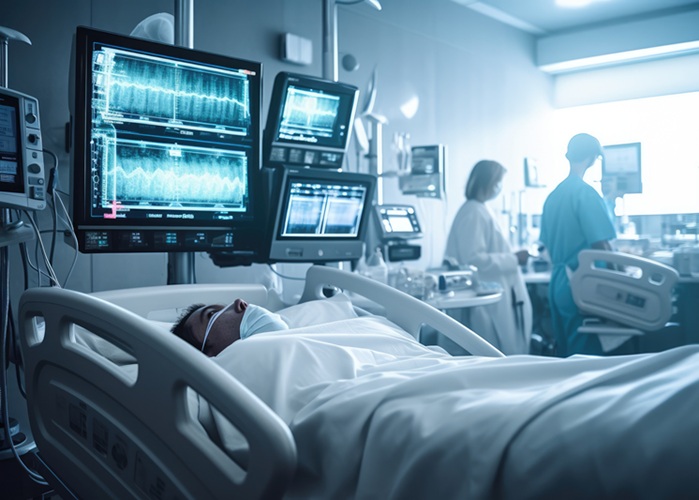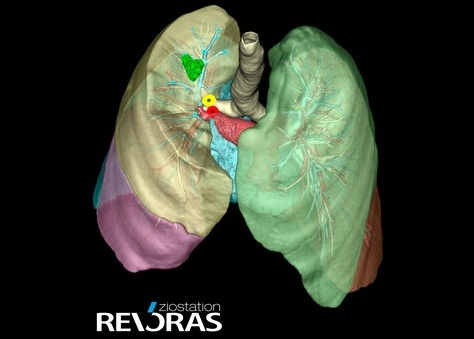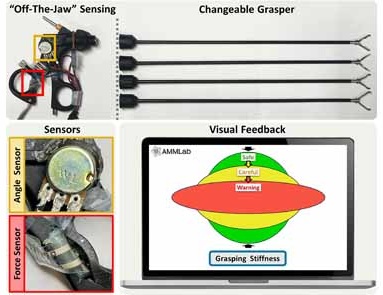Portable Imaging Device Assesses Tissue Oxygenation
|
By HospiMedica International staff writers Posted on 26 Jan 2017 |
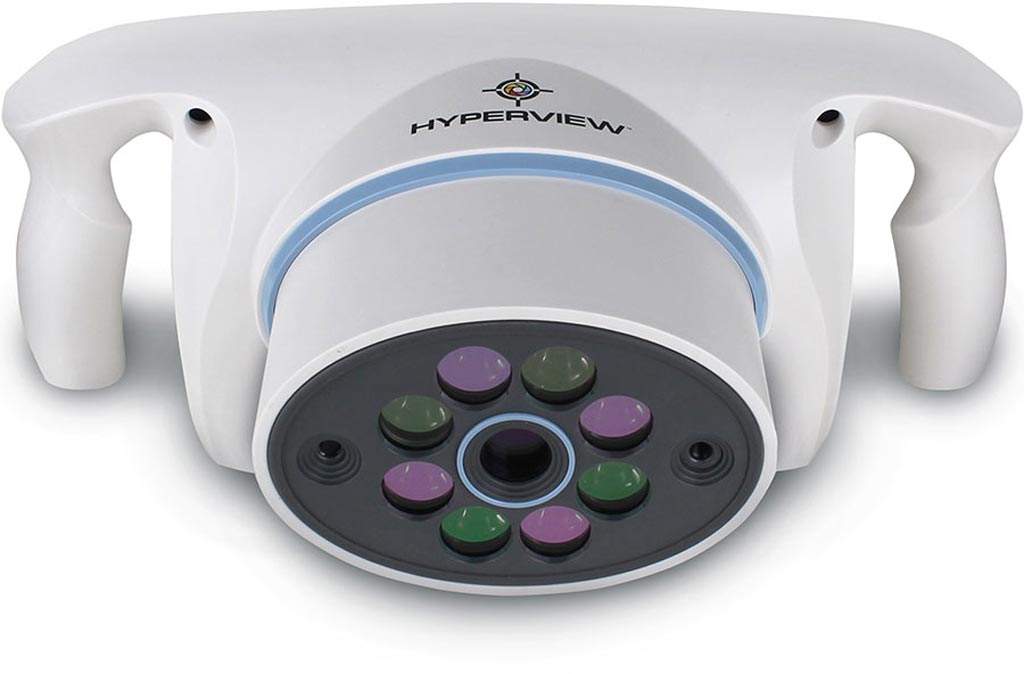
Image: The Hyperview hyperspectral tissue oxygenation device (Photo courtesy of HyperMed Imaging).
A handheld, battery operated diagnostic imaging device measures oxygen saturation (O2Sat) and other measures in superficial tissues for patients with potential circulatory compromise.
The HyperView is intended for use by healthcare professionals as a noninvasive tissue oxygenation measurement system that reports approximate values of O2Sat, oxyhemoglobin, and deoxyhemoglobin levels in superficial tissue, displaying the results as two-dimensional, color-coded images of the scanned surface. The images and data can thus provide hyperspectral tissue oxygenation measurements for the selected tissue regions in patients with compromised vascular systems, such as those who suffer from diabetes, peripheral vascular disease (PAD), and limb ischemia.
The patented technology uses proprietary hyperspectral imaging technology to differentiate light absorption patterns between oxygenated hemoglobin and deoxygenated hemoglobin. Software tools then allow the clinician to analyze various areas within the image corresponding to locations on the skin surface, thus determining the location of ischemic tissue. The HyperView is a product of HyperMed Imaging, and has been approved by the U.S. Food and Drug Administration (FDA).
“The new HyperView product represents a significant advancement in non-invasive assessment of superficial tissue oxygenation. We began years ago by first meeting with clinicians to understand their working environment and determine user requirements,” said Mark Darty, President and CEO of HyperMed. “The need for portability, ease of use, and speed of imaging required a full custom design for the HyperView product. Our team’s effort has long been energized by a belief that the HyperView product holds great potential to positively impact the lives of millions of patients.”
“The HyperView is a new and innovative product that can provide clinicians a better understanding of surface perfusion and localized oxygen delivery in patients with potential circulatory compromise, which is important for a number of applications including limb ischemia, wound healing, and reconstructive surgery,” said Professor Aristidis Veves, MD, of Harvard Medical School (Boston, MA, USA), chairman of HyperMed Imaging’s scientific advisory board.
The HyperView is intended for use by healthcare professionals as a noninvasive tissue oxygenation measurement system that reports approximate values of O2Sat, oxyhemoglobin, and deoxyhemoglobin levels in superficial tissue, displaying the results as two-dimensional, color-coded images of the scanned surface. The images and data can thus provide hyperspectral tissue oxygenation measurements for the selected tissue regions in patients with compromised vascular systems, such as those who suffer from diabetes, peripheral vascular disease (PAD), and limb ischemia.
The patented technology uses proprietary hyperspectral imaging technology to differentiate light absorption patterns between oxygenated hemoglobin and deoxygenated hemoglobin. Software tools then allow the clinician to analyze various areas within the image corresponding to locations on the skin surface, thus determining the location of ischemic tissue. The HyperView is a product of HyperMed Imaging, and has been approved by the U.S. Food and Drug Administration (FDA).
“The new HyperView product represents a significant advancement in non-invasive assessment of superficial tissue oxygenation. We began years ago by first meeting with clinicians to understand their working environment and determine user requirements,” said Mark Darty, President and CEO of HyperMed. “The need for portability, ease of use, and speed of imaging required a full custom design for the HyperView product. Our team’s effort has long been energized by a belief that the HyperView product holds great potential to positively impact the lives of millions of patients.”
“The HyperView is a new and innovative product that can provide clinicians a better understanding of surface perfusion and localized oxygen delivery in patients with potential circulatory compromise, which is important for a number of applications including limb ischemia, wound healing, and reconstructive surgery,” said Professor Aristidis Veves, MD, of Harvard Medical School (Boston, MA, USA), chairman of HyperMed Imaging’s scientific advisory board.
Latest Critical Care News
- First-Of-Its-Kind AI-Powered Probability Scoring System Assesses Heart Failure with Preserved Ejection Fraction
- AI-Assisted Colonoscopy Detects More Polyps but Has Modest Effect on Cancer Risk
- Wearables Could Reduce Need for Continuous Blood Thinners in Patients with Atrial Fibrillation
- AI Model Provides Real-Time Sepsis Risk Alerts for Improving ICU Patient Survival
- AI Algorithm Improves Intravenous Nutrition for Premature Babies
- Smart Mirror Generates AI-Powered Health Insights by Analyzing Facial Blood Flow
- Painless Diabetes Patch to Replace Needle Pricks

- Sensory T-Shirt Monitors Patient’s Vitals After Urological Surgery for Cancer
- Super-Sensitive Radar Technology Warns of Serious Heart Issues
- Thermal Imaging Could Accurately Track Vital Signs for Early Disease Detection
- New Microfluidic Device Improves Safety of Leukemia Treatment for Children
- Precision Transfusion Approach Improves Outcomes in TBI Patients
- Predictive Model for Daily Risk Alerts in Sepsis Patients Enables Early Intervention
- Novel Technology Measures Intracranial Pressure More Accurately and Non-Invasively
- Novel Coating Significantly Extends Longevity of Implantable Biosensors
- Nanogel-Based Drug Delivery Technology to Improve UTI Treatment
Channels
Artificial Intelligence
view channel
Innovative Risk Score Predicts Heart Attack or Stroke in Kidney Transplant Candidates
Heart researchers have utilized an innovative risk assessment score to accurately predict whether patients being evaluated for kidney transplants are at risk for future major cardiac events, such as a... Read more
AI Algorithm Detects Early-Stage Metabolic-Associated Steatotic Liver Disease Using EHRs
Liver disease, which is treatable when detected early, often goes unnoticed until it reaches advanced stages. Metabolic-associated steatotic liver disease (MASLD), the most prevalent form of liver disease,... Read moreCritical Care
view channel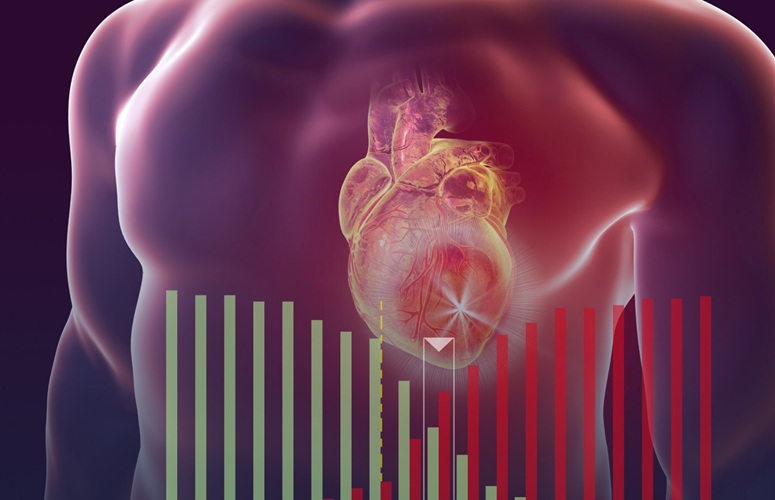
First-Of-Its-Kind AI-Powered Probability Scoring System Assesses Heart Failure with Preserved Ejection Fraction
Heart failure with preserved ejection fraction (HFpEF) is one of the most difficult types of heart failure to diagnose due to the intricate interaction between various clinical and echocardiographic factors.... Read more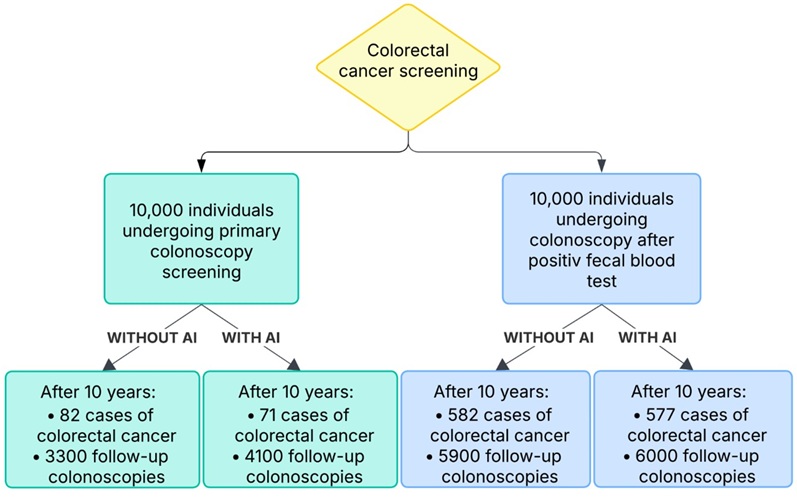
AI-Assisted Colonoscopy Detects More Polyps but Has Modest Effect on Cancer Risk
Colorectal cancer is among the most common cancers in the Western world. Currently, screening is performed using a test that detects blood in the stool (FIT screening). If the test identifies a certain... Read more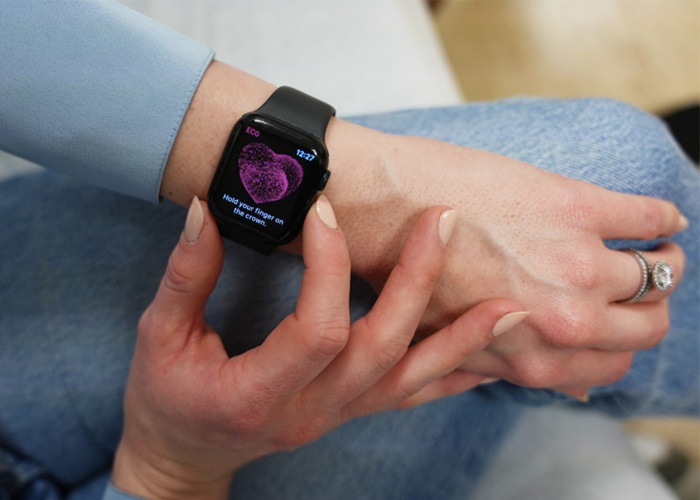
Wearables Could Reduce Need for Continuous Blood Thinners in Patients with Atrial Fibrillation
Atrial fibrillation (AFib) is the most prevalent heart arrhythmia, affecting over 5 million individuals in the United States, with projections suggesting that number could rise to 12.1 million by 2030.... Read moreSurgical Techniques
view channel
Tiny Robotic Tools Powered by Magnetic Fields to Enable Minimally Invasive Brain Surgery
Over the past few decades, there has been a significant surge in the development of robotic tools designed to facilitate minimally invasive surgeries, improving recovery times and patient outcomes.... Read more
Magnetic Tweezers Make Robotic Surgery Safer and More Precise
Microrobots are small-scale robots designed using nanotechnology, and they hold significant potential for various medical applications, including surgery, targeted drug delivery, and biopsy.... Read morePatient Care
view channel
Portable Biosensor Platform to Reduce Hospital-Acquired Infections
Approximately 4 million patients in the European Union acquire healthcare-associated infections (HAIs) or nosocomial infections each year, with around 37,000 deaths directly resulting from these infections,... Read moreFirst-Of-Its-Kind Portable Germicidal Light Technology Disinfects High-Touch Clinical Surfaces in Seconds
Reducing healthcare-acquired infections (HAIs) remains a pressing issue within global healthcare systems. In the United States alone, 1.7 million patients contract HAIs annually, leading to approximately... Read more
Surgical Capacity Optimization Solution Helps Hospitals Boost OR Utilization
An innovative solution has the capability to transform surgical capacity utilization by targeting the root cause of surgical block time inefficiencies. Fujitsu Limited’s (Tokyo, Japan) Surgical Capacity... Read more
Game-Changing Innovation in Surgical Instrument Sterilization Significantly Improves OR Throughput
A groundbreaking innovation enables hospitals to significantly improve instrument processing time and throughput in operating rooms (ORs) and sterile processing departments. Turbett Surgical, Inc.... Read moreHealth IT
view channel
Printable Molecule-Selective Nanoparticles Enable Mass Production of Wearable Biosensors
The future of medicine is likely to focus on the personalization of healthcare—understanding exactly what an individual requires and delivering the appropriate combination of nutrients, metabolites, and... Read more
Smartwatches Could Detect Congestive Heart Failure
Diagnosing congestive heart failure (CHF) typically requires expensive and time-consuming imaging techniques like echocardiography, also known as cardiac ultrasound. Previously, detecting CHF by analyzing... Read morePoint of Care
view channel
Handheld, Sound-Based Diagnostic System Delivers Bedside Blood Test Results in An Hour
Patients who go to a doctor for a blood test often have to contend with a needle and syringe, followed by a long wait—sometimes hours or even days—for lab results. Scientists have been working hard to... Read more
Smartphone-Enabled, Paper-Based Quantitative Diagnostic Platform Transforms POC Testing
Point-of-care diagnostics are crucial for public health, offering rapid, on-site testing that enables prompt diagnosis and treatment. This is especially valuable in remote or underserved regions where... Read moreBusiness
view channel
Expanded Collaboration to Transform OR Technology Through AI and Automation
The expansion of an existing collaboration between three leading companies aims to develop artificial intelligence (AI)-driven solutions for smart operating rooms with sophisticated monitoring and automation.... Read more












